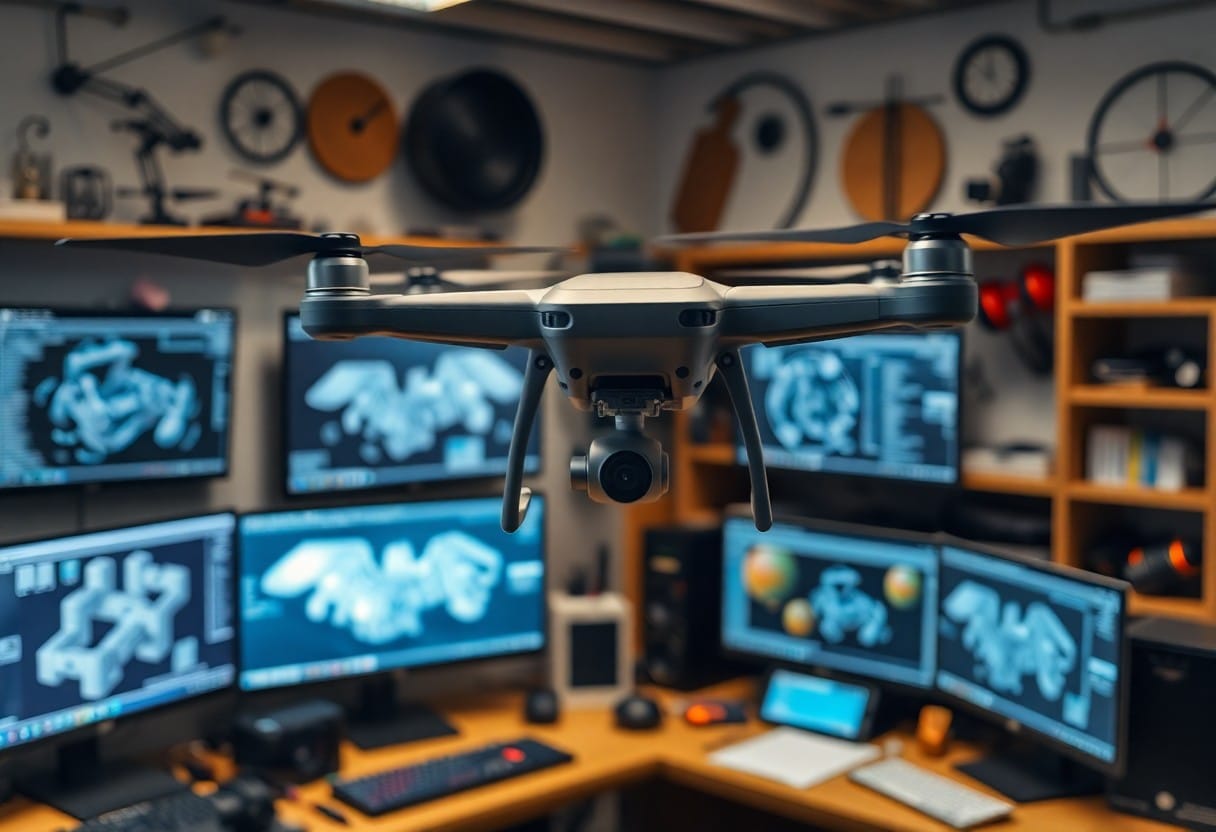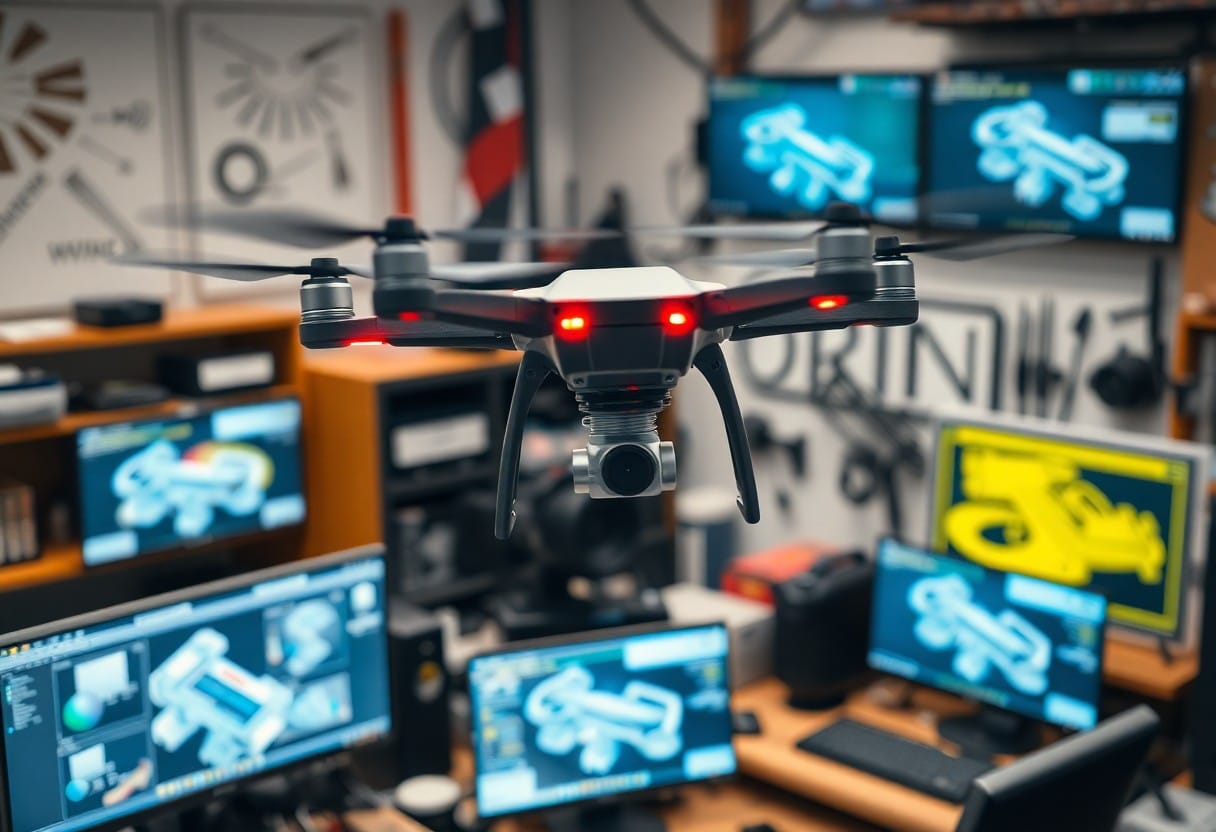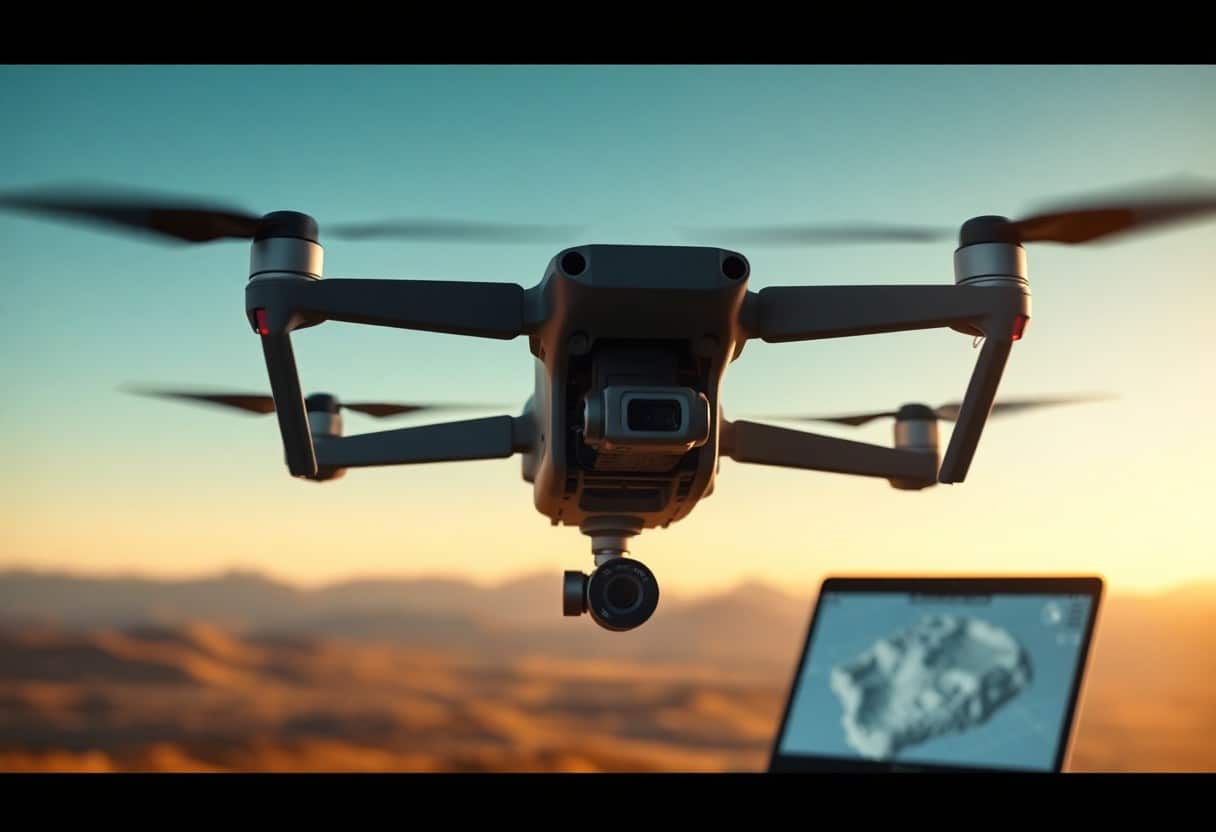3 Steps to Improve Your Drone 5D Modeling Skills Today
In today's technological era, drone 3D modeling has become an important tool for many industries. If you want to upgrade your skills.Take these five stepswill be very helpful. These steps will not only allow you to use the drone more effectively for modeling, but will also bring your work to a higher standard of quality. As your skills improve, you'll be able to create even more stunning visual effects and stand out from the competition.
Important points:
- Setting up a drone: Ensure that the drone is calibrated and set up correctly, which will affect the quality of the shot.
- Choosing the right equipment: The use of high-resolution cameras and stabilizers improves the clarity of the model.
- Planned Shooting Path: Develop a clear shooting plan prior to shooting to get the best view angle and coverage area.
- Post-processing: Editing with professional software to enhance image quality and model detail.
- Practice and Feedback: Keep practicing and seek advice from others to improve your skills.
- Learning new skills: Keeping abreast of new technologies and trends to enhance your professional knowledge.
- Participating Communities: Join the drone and 3D modeling community to share your experience and skills with each other.
Understanding the basics of 3D modeling for drones
Drone 3D modeling is a rapidly evolving technology capable of transforming real-world objects into digital models. It's important to understand these basic concepts because they lay the foundation for your modeling journey. By learning about camera position, field of view, and image capture techniques, you can begin to create accurate and high-quality 3D models that will help you further your career in the field.
Basic Terminology
When performing 3D modeling of a drone, there are a number ofKey Termsneed to know, such as "point cloud", "mesh", and "render". These terms describe the different steps in the modeling process and their results. Mastering these basic terms will help you understand your program more clearly and communicate effectively.
Recommended Software and Tools
Choosing the right software and tools is critical to successful drone 3D modeling. You may consider using software such asPix4Drespond in singingAgisoft MetashapeThis type of professional software, these tools are capable of handling large amounts of data and generating high quality 3D models. In addition, for a wide range of functions, theBlenderIt is also a good choice because of its powerful modeling and rendering capabilities.
When choosing software and tools, you need to consider your specific needs and budget. Pix4Drespond in singingAgisoft MetashapeWhile powerful, it often comes with a higher cost. AndBlenderAs a free and open source option, it offers a wealth of features to fulfill the needs of users of all levels. Understanding the features of these software can help you improve your modeling skills more effectively and help achieve your drone modeling goals.
Mastering Drone Flying Techniques
To improve your drone 3D modeling skills, you must firstMastering Drone Flying TechniquesIt's not just about maneuvering a drone. It's not just about maneuvering the drone, it's about understanding the different flight modes and how to fly safely in various environments. By doing this, you will be able to accurately control the movement of the drone, which is essential for subsequent 3D modeling work.
Fundamentals of Drone Maneuvering
The fundamentals of drone maneuvering include understanding the different controller functions and flight control techniques. You will need to familiarize yourself with throttle, directional and attitude controls to ensure the stability and agility of your drone. Starting off with practice in the open area will help you lay the groundwork.Solid FoundationThe
Capture high quality data
Effective data collection is essential for accurate 3D modeling. You need to know how to shoot at different flight altitudes and angles to get the clearest images and data. In addition, you need to learn how to utilize the drone's camera settings to enhance your shots.
When capturing high-quality data, you should be aware thatSelect the appropriate camera settingsThe quality of your shots will be affected by different environmental conditions, such as ISO, shutter speed, and aperture size. Make sure you shoot in ideal lighting conditions to avoid overexposed or underexposed images. Also, consider usingAuto Stabilization TechnologyTo minimize the effects of wind or other external factors. This ensures that the data you get when modeling in 3D is of high quality and usability.

Advanced Image Measurement Technology
Enhance your drone 3D modeling skills by mastering advanced image measurement techniques that can help you obtain higher quality models. Using these techniques, you can explore more accurate mapping methods. To learn more about this topic, you can check out theMastering Drone Mapping - 7 Steps to Enhanced Aerial 3D ReconstructionThe
| finesse | Description |
|---|---|
| Use a high quality camera | Choose a camera with high resolution to ensure every detail is captured. |
| Reasonable planning of flight paths | Pre-planned flight paths help ensure coverage and consistency. |
| Control the shooting interval | Ensure that there is enough overlap between each image to enhance processing. |
Best Image Capture Practices
It is important to follow best practices when you are capturing images. First, make sure the drone is at a stable altitude to minimize blurring of the image. Also, pay attention to lighting conditions; the best time to shoot is at sunrise or sunset for softer lighting effects. Use auto exposure and shutter speed settings to get uniform images.
Processing techniques for optimizing results
For image processing techniques, you should use professional image processing software to ensure that the resulting 3D model is optimized. Such processing includes not only image correction, but also ensuring that the images are aligned and stitched accurately.
When working with images, it is especially important to pay attention toImage quality and clarityThe final 3D model is a very precise one. Ensuring that all images are accurately aligned when stitched together is critical to the accuracy of the final 3D model. Appropriate use ofAutomation ToolsOptimizing the workflow and fixing minor errors manually will further improve the overall results of the process. Finally, select the appropriate format for output for subsequent applications.
Enhance your 3D models
To enhance your 3D models, learn aboutWhat is the role of motion structures in 3D modeling of a drone?Important. Observing the details, proportions, and overall structure of a model is essential, and you should consider using high-resolution images and appropriate design techniques to enhance the realism of your model. By experimenting and learning, you will be able to create more attractive and professional looking work.
Materials and Lighting
In 3D modeling, the use of texture and lighting is extremely important. Choosing the right texture and adjusting the lighting angle will make your model more striking and noisy. You can use different light sources to emphasize details and create stunning visual effects that will give your audience a deeper experience of your work.
Utilizing post-processing software
With post-processing software, you can further enhance the texture of your 3D models. These tools can help you adjust colors, increase contrast, and even simulate different ambient lighting effects. Effective use of these tools will give your work a more professional and artistic look, and will impress your audience with your models.
especially when utilizing post-processing software.It is important to know the functions of various tools. This not only makes your 3D model more visually appealing, but also enhances its persuasive power. By adjusting the brightness, saturation, and sharpness of the image, you can enhance the model's features andEliminates any unnatural imperfectionsThis is essential to presenting first-class work. Remember.Post-processing is a creative processThe more you practice, the more your skills will improve.

Building Your Portfolio
Create aProfessional Portfoliois an important step in enhancing your drone 3D modeling skills. Your portfolio should showcase your best work from different projects, which will help potential clients or employers understand your abilities and style. You can refer to the resources here forWhat are the pilot certification requirements for commercial drones?The technology is the same as the one used for the other, so you can make your work more convincing.
Show your work
When presenting your project, make sure there is a detailed explanation behind each piece of work. Describing your design process, the challenges you faced, and the solutions to them will not only capture the audience's interest, but also emphasize your professionalism.
Networking and Collaborating with Others
Building professional relationships is critical to your growth. Seek out peers or professionals in related fields to network with. This will not only broaden your horizons, but also provide opportunities to collaborate and improve your skills together.
existNetworking and Collaborating with OthersDuring the course of your career, you should actively participate in industry events, workshops, or online communities that will enhance your visibility in the field of drone modeling. Collaborating with professionals from different backgrounds will not only allow you to learn new skills, but also expand your business scope. Sharing experiences, resources, and ideas with each other will allow your skills and network to soar, opening up even greater opportunities for the future.

Continuous Learning and Community Engagement
To enhance your drone 3D modeling skills.Continuous Learning and Community EngagementIt's key. Whether it's through an online course or participation in a community, you'll be able to gain the latest information and skills, and share your experiences with others to enhance your professionalism.
Online Courses and Resources
On the web, there are manyQuality Online Courses and ResourcesYou can learn 3D modeling for drones. Not only can you learn the basics, but you'll also be able to master advanced techniques and stay updated on the latest trends in the industry.
Join the Drone and 3D Modeling Community
Joining a drone and 3D modeling community is a great way to develop your skills. These communities not only provide support and advice, but also expose you to different perspectives and ideas that can enhance your talents. Learn more about 3D modeling throughExchange of Experiencerespond in singingShare your workYou will be able to receive valuable feedback and inspiration, as well as build your professional network.
5 Steps to Improve Your Drone 3D Modeling Skills
With these five steps, you can effectively improve your drone 3D modeling skills. First, familiarize yourself with the software and tools, second, take tutorials and courses, then practice a lot and get inspired by others' work. Finally, keep seeking feedback and suggestions. Keeping an open mind and a determination to keep improving during the learning process will help you succeed in the field of drone modeling.
Frequently Asked Questions (FAQ)
Q: How can I start improving my drone 3D modeling skills?
A: The first step to start improving your skills is to learn basic drone operation and 3D modeling software. You can find many free resources and tutorials online that will help you familiarize yourself with the basics.
Q: What are the recommended 3D modeling software for drones?
A: There are many good 3D modeling software on the market, such as Blender, Agisoft Metashape, and Pix4D. Each of these software has its own features, so choose the one that suits your needs.
Q: How long does it take to improve my drone 3D modeling skills?
A: The amount of time it takes to improve this skill varies from person to person, but generally speaking, with continued study and practice, significant improvements can be seen within a few weeks to a few months.
Q: How to choose the right drone for 3D modeling?
A: Choosing the right drone should take into account the camera resolution, flight time and stability. For high quality 3D modeling, it is wise to choose a drone with a high resolution camera.
Q: What are some common drone modeling mistakes?
A: Common mistakes include poor camera angles, poor flight paths, and poor post-processing. Learning these mistakes and correcting them over time will improve the accuracy and quality of your modeling.
Q: How do I do drone photography to get the best 3D effect?
A: For best results, shoot at a constant height and speed, and lay out the shooting path to ensure that the images overlap, so that you can get the ideal 3D model in post-processing.
Q: Where can I find communities or resources for drone modeling?
A: Online communities such as forums, social media groups, and professional websites (e.g. UAV Coach and DroneDeploy) have a wealth of resources and experiences to share, and joining these communities will help you learn and improve.




